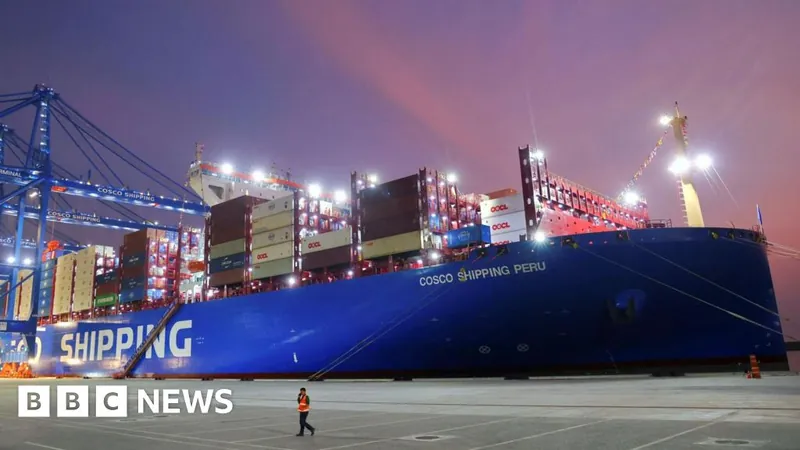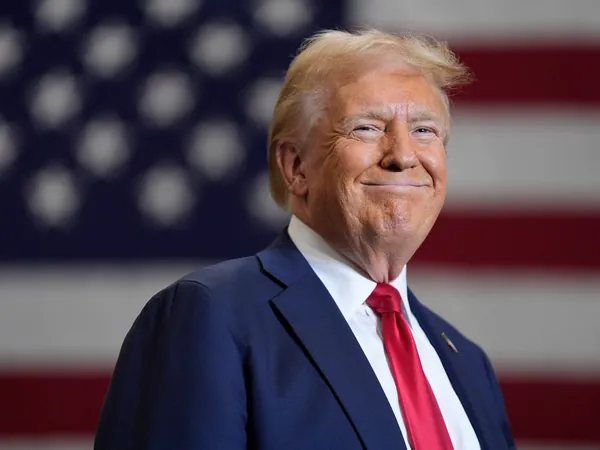
China’s New Megaport Revolutionizes Trade in Latin America, Leaving the US Scrambling for Relevance
2024-11-15
Author: Charlotte
As diplomatic relations between Washington and Beijing hang in the balance with the likely return of Donald Trump to the political spotlight, China has struck a compelling blow to assert its dominance in Latin America. This week, the inauguration of the Chancay megaport on Peru's coast marks a seismic shift in trade dynamics, setting the stage for an unprecedented economic relationship that might sideline traditional North American routes.
Former President Trump campaigned heavily on the promise of imposing tariffs up to 60% on Chinese imports, yet as the US grapples with internal issues, China has quickly escalated its involvement in South America. President Xi Jinping himself was present at the unveiling of the $3.5 billion port, signaling its importance for China and the strategic intent behind the Belt and Road Initiative (BRI). Xi’s attendance during the Asia-Pacific Economic Cooperation (APEC) summit also highlights China's growing interests in a region historically seen as America’s backyard.
Experts like Monica de Bolle from the Peterson Institute for International Economics point to years of American neglect towards its southern neighbors, allowing China to move in swiftly. 'China’s engagement is reconfiguring the landscape. The backyard of America is now turning into a playground for Chinese investment,' she warned.
The Chancay port is not just a port; it is on track to transform a sleepy Peruvian fishing town into a global logistics hub. The port will enable expedient trade routes for goods coming from nations like Chile, Ecuador, Colombia, and Brazil directly to Shanghai, dramatically reducing shipping times from 35 to 23 days. Peru’s President Dina Boluarte referred to the port as a 'nerve center' for accessing Asia's massive markets, suggesting economic uplift not only for Peru but for the entire region.
However, while the port helps exports like Brazilian soybeans and Chilean copper, it also raises alarms about an influx of inexpensive Chinese goods harming domestic industries. In response to Chinese goods flooding their markets, countries such as Chile and Brazil have begun revoking tax exemptions on low-value foreign purchases to protect local enterprises.
As if that were not enough to pique the US's interest, retired General Laura Richardson has soberly warned about the strategic implications of Chancay. With the capacity to accommodate ultra-large container ships, there are fears that it could also serve as a docking point for Chinese military vessels, a serious concern for US military strategists.
Most strikingly, while the US's influence wanes, China is seen as acting with determination and consistency. While outgoing President Joe Biden’s first visit to South America garnered little attention in comparison to Xi's engagement, it underscores a critical reality: China is continuously cultivating alliances, while US outreach is perceived as inconsistent and reactionary.
The broader implications extend far beyond trade. Many Latin American nations are cautiously watching how their relationships with the US evolve, especially with Trump’s potential resurgence. Experts speculate that the US may apply pressure regarding trade agreements and other policies, making the region feel the squeeze from both superpowers.
Despite the challenges, the rapid growth of China’s footprint in Latin America may provoke a much-needed awakening in Washington. Experts assert that a meaningful, strategic engagement is crucial. 'If the US doesn't step up, it risks ceding the future to China,' warns Eric Farnsworth from the Council of the Americas, emphasizing there is still goodwill towards the US—but it needs to be earned through concrete actions.
As Latin America looks to navigate its options amid increasing Chinese influence, one thing is clear: the stakes are higher than ever, and the world will be watching how this geopolitical saga unfolds. With ongoing tensions and a potential trade war on the horizon, the coming years could see Latin America caught amidst clashing superpowers, where the strategies of both Beijing and Washington will have profound impacts on trade, diplomacy, and regional dynamics.









 Brasil (PT)
Brasil (PT)
 Canada (EN)
Canada (EN)
 Chile (ES)
Chile (ES)
 España (ES)
España (ES)
 France (FR)
France (FR)
 Hong Kong (EN)
Hong Kong (EN)
 Italia (IT)
Italia (IT)
 日本 (JA)
日本 (JA)
 Magyarország (HU)
Magyarország (HU)
 Norge (NO)
Norge (NO)
 Polska (PL)
Polska (PL)
 Schweiz (DE)
Schweiz (DE)
 Singapore (EN)
Singapore (EN)
 Sverige (SV)
Sverige (SV)
 Suomi (FI)
Suomi (FI)
 Türkiye (TR)
Türkiye (TR)